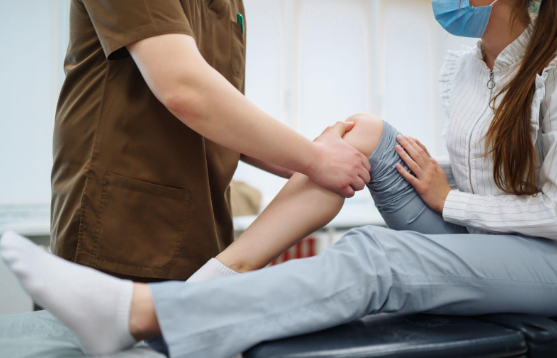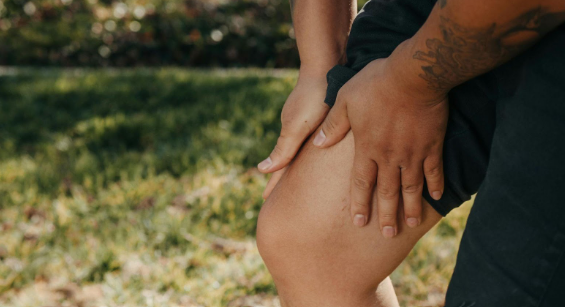Exercises and Stretches for Herniated Disc Relief

Do you feel pain in the lower back or neck? Do you experience pain that radiates down the arms or legs? Do you feel numbness or tingling in the foot or toes? If you answer yes to any of these questions, you may be dealing with a herniated disc. Exercises and stretches can help you relieve these unpleasant sensations.
Why Do Exercises and Stretches Help Relieve Pain from a Herniated Disc?
A herniated disc causes structural and functional changes. As it dehydrates and loses height, the vertebrae move closer together, slackening the ligaments that connect them and reducing spinal stability.
While ligaments themselves cannot be strengthened through exercise, targeted exercises can strengthen the surrounding muscles, thereby compensating for this loss of stability. By enhancing the strength and endurance of the spinal muscles, the exercises and stretches provide better support and alignment for the spine, which helps to alleviate pressure on the affected nerves.
A Few Important Disclaimers
Before we delve into the list, we have several important disclaimers for you:
- Avoid exercises and stretches during the acute stage of a herniated disc.
- Always consult your treating clinician before beginning any new stretching or exercise program for a herniated disc.
- Sometimes, intervention with a steroid injection or oral steroids is required before exercise.
- If you experience any pain, stop immediately.
With that being said, depending on where the herniated disk has occurred in your spine, it’s best to try exercises and stretches for either the cervical spine or the lumbar spine.
Exercises and Stretches for the Cervical Spine
The cervical spine is the upper portion of the vertebral column that consists of the first seven vertebrae located in the neck.
Isometric Hold Exercise
Sit or stand with your spine straight, then place your hand on your forehead. Gently push your head against your hand, ensuring there is no movement. Hold this position for 5-10 seconds, then relax.
Repeat this exercise 15 times to strengthen the neck muscles and provide stability to the cervical spine.
Neck Extension with Head Lift Exercise
In order to perform this exercise, lie on your stomach with your arms at your sides. Slowly lift your head and upper chest off the ground, hold for a few seconds, then lower back down.
Repeating the exercise 5-10 times helps to stretch and strengthen the muscles at the back of your neck.
Chin Tuck / Neck Retraction Exercise
Sit or stand with your spine straight, then gently pull your chin back as if attempting to create a double chin. Hold this position for 5 seconds, and then feel free to relax.
This exercise, when repeated 10-15 times, helps in reducing neck pain by aligning the cervical spine.
Shoulder Retraction Exercise (Scapular Retractions)
Sit or stand with your spine straight, then squeeze your shoulder blades together, holding the contraction for 5 seconds. Relax, and then repeat this movement 10-15 times.
This exercise strengthens the upper back muscles, supporting better posture and reducing strain on the cervical spine.
Exercises and Stretches for the Lumbar Spine
The lumbar spine, also known as the lower back or lumbar region, refers to the lower portion of the vertebral column, consisting of the five largest and strongest vertebrae.
Gentle Knee-to-Chest Stretch
Begin performing this exercise by lying on your back with your knees bent and your feet flat on the floor. Embrace one knee with both hands and gently pull it towards your chest. Maintain this position for 15-30 seconds, and then switch legs.
Repeat this stretch 2-3 times for each leg. This exercise aids in relieving tension in the lower back.
Cat-Cow Stretch
To perform this exercise, start in a tabletop position on your hands and knees. Arch your back up towards the ceiling (Cat), then lower your belly towards the floor (Cow). Repeat this movement slowly, 10-15 times. The Cat-Cow stretch is a dynamic exercise that enhances flexibility and reduces stiffness in the spine.
Back Flexion Stretch
While lying on your back with your knees bent and feet flat on the floor, gently pull both knees towards your chest. For maximum effect, hold this position for 15-30 seconds before relaxing into the starting position.
Repeat this stretch 2-3 times. It helps decompress the lower spine, offering relief from discomfort.
Spinal Decompression Stretch
Stand with your feet shoulder-width apart and reach your arms overhead, interlacing your fingers. Gently stretch upwards, elongating your spine. Hold this stretch for 15-30 seconds. The spinal decompression stretch is effective in alleviating pressure on the spinal discs.
Piriformis Muscle Stretch
Lie on your back with both knees bent, and place your right ankle over your left knee. Gently pull your left thigh towards your chest, holding for 15-30 seconds, then switch sides. Repeat this stretch 2-3 times for each side. Targeting the piriformis muscle, the exercise helps relieve sciatic pain.
Seated Hamstring Stretch
To perform this exercise, sit on the floor with one leg extended and the other bent. Reach towards the toes of your extended leg, holding for 15-30 seconds before switching legs. Repeat this stretch 2-3 times for each leg. It aids in relieving tension in the hamstrings and lower back.
Prone Extension Stretch
Lie on your stomach, keeping your elbows under your shoulders. Gently push your upper body up while keeping your hips on the floor. Hold this position for 15-30 seconds before lowering back down. Repeat this stretch 2-3 times. It reduces pressure on the lumbar discs by arching the lower back.
Pelvic Tilt or Abdominal Bracing
While lying on your back with your knees bent and feet flat on the floor, tighten your abdominal muscles and press your lower back into the floor. Hold this position for 5-10 seconds before you return to the starting position.
Repeat this exercise 10-15 times. It strengthens the core muscles, providing support for the lower back.
Activities that Patients with Herniated Disks Should Avoid
Some activities can exacerbate the condition and increase pain or the risk of further injury. High-impact activities such as running, jumping, or any vigorous sports should be avoided, as they place undue stress on the spine.
Additionally, heavy lifting, especially with improper form, can worsen disc herniation. Activities that involve twisting or bending the spine, such as certain yoga poses or golf, can also aggravate the condition.
Prolonged sitting, especially with poor posture, can increase pressure on the discs and should be minimized.
At
Pain Treatment Centers of America, we are here to help you manage pain caused by herniated discs.
Find a clinic closest to you and
contact us for an appointment.













